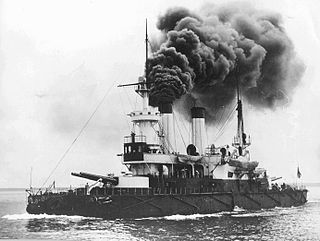 W
WAdmiral Seniavin, was a Admiral Ushakov-class coastal defense ship built for Imperial Russian Navy during the 1890s. She was one of eight Russian pre-dreadnought battleships captured by the Imperial Japanese Navy from the Russians during the Russo-Japanese War of 1904–1905. She subsequently served in the Japanese Navy under the name Mishima (見島) until sunk as a target in 1936.
 W
WThe cruiser Bayan was the name ship of the four Bayan-class armoured cruisers built for the Imperial Russian Navy in the first decade of the 20th century. The ship had to be built in France because there was no available capacity in Russia. Bayan was assigned to the First Pacific Squadron after completion and based at Port Arthur from the end of 1903. She suffered minor damage during the Battle of Port Arthur at the beginning of the Russo-Japanese War of 1904–05 and supported destroyers as they patrolled outside the harbour. After bombarding Japanese positions in July 1904, the ship struck a mine and was out of action for the next several months. Bayan was sunk during the Siege of Port Arthur and was then salvaged by the Japanese after the war.
 W
WGeneral-Admiral Apraksin, sometimes transliterated as Apraxin, was a member of the Admiral Ushakov-class coastal defense ships of the Imperial Russian Navy. She was named after General Admiral Fyodor Matveyevich Apraksin, the first commander of Russian Baltic Fleet. She was one of eight Russian pre-dreadnought battleships captured by the Imperial Japanese Navy during the Russo-Japanese War of 1904-1905. She subsequently served in the Japanese Navy as Okinoshima (沖ノ島) until removed from service in 1922.
 W
WImperator Nikolai I was a Russian Imperator Aleksandr II-class battleship built for the Baltic Fleet in the late 1880s. She participated in the celebration of the 400th anniversary of the discovery of America in New York City in 1892. She was assigned to the Mediterranean Squadron and visited Toulon in October 1893. She sailed for the Pacific Ocean during the First Sino-Japanese War and remained in the Pacific until late 1896, when she returned to the Mediterranean Squadron and supported Russian interests during the Cretan Revolt. She returned to the Baltic in April 1898 and had a lengthy refit, which replaced all of her machinery, before returning to the Mediterranean in 1901.
 W
WNovík was a protected cruiser in the Imperial Russian Navy, built by Schichau shipyards in Elbing near Danzig, Germany.
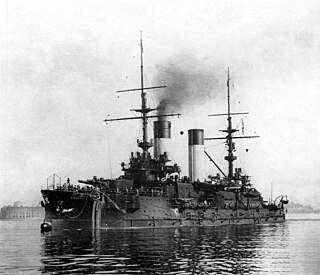 W
WOryol was a Borodino-class battleship built for the Imperial Russian Navy in the first decade of the 20th century. The ship was completed after the start of the Russo-Japanese War in February 1904 and was assigned to the Second Pacific Squadron sent to the Far East six months later to break the Japanese blockade of Port Arthur. The Japanese captured the port while the squadron was in transit and their destination was changed to Vladivostok. Oryol was badly damaged during the Battle of Tsushima in May 1905 and surrendered to the Japanese, who put her into service under the name of Iwami.
 W
WPallada was the lead ship in the Pallada class of protected cruisers in the Imperial Russian Navy. She was built in the Admiralty Shipyard at Saint Petersburg, Russia. The new class was a major improvement on previous Russian cruisers, although the armor protection was light.
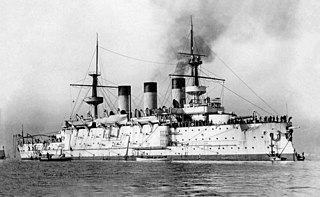 W
WPeresvet was the lead ship of the three Peresvet-class pre-dreadnought battleships built for the Imperial Russian Navy at the end of the nineteenth century. The ship was transferred to the Pacific Squadron upon completion and based at Port Arthur from 1903. During the Russo-Japanese War of 1904–1905, she participated in the Battle of Port Arthur and was seriously damaged during the Battle of the Yellow Sea and again in the siege of Port Arthur. The ship was scuttled before the Russians surrendered, then salvaged by the Japanese and placed into service with the name Sagami (相模).
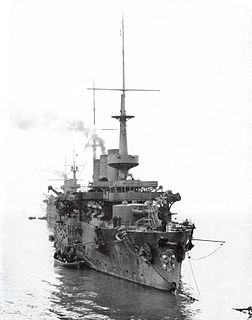 W
WPobeda was the last of the three Peresvet-class pre-dreadnought battleships built for the Imperial Russian Navy at the end of the nineteenth century. The ship was assigned to the Pacific Squadron upon completion and based at Port Arthur from 1903. During the Russo-Japanese War of 1904–1905, she participated in the battles of Port Arthur and the Yellow Sea. Having escaped serious damage in these engagements, Pobeda was sunk by gunfire during the siege of Port Arthur, and then salvaged by the Japanese and placed into service under the name Suwo (周防).
 W
WThe Russian battleship Poltava was one of three Petropavlovsk-class pre-dreadnought battleships built for the Imperial Russian Navy in the 1890s. The ship was transferred to the Pacific Squadron shortly after completion and based at Port Arthur from 1901. During the Russo-Japanese War of 1904–1905, she participated in the Battle of Port Arthur and was heavily damaged during the Battle of the Yellow Sea. She was sunk by Japanese artillery during the subsequent siege of Port Arthur in December 1904, but was raised by the Imperial Japanese Navy (IJN) after the war and renamed Tango (丹後).
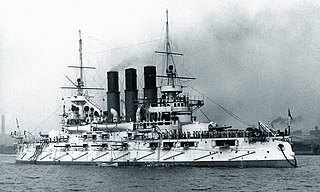 W
WRetvizan was a pre-dreadnought battleship built before the Russo-Japanese War of 1904–1905 for the Imperial Russian Navy. She was built by the American William Cramp & Sons because Russian shipyards were already at full capacity. Named after a Swedish ship of the line that was captured during the battle of Vyborg Bay in 1790, Retvizan was briefly assigned to the Baltic Fleet, but was transferred to the Far East in 1902.